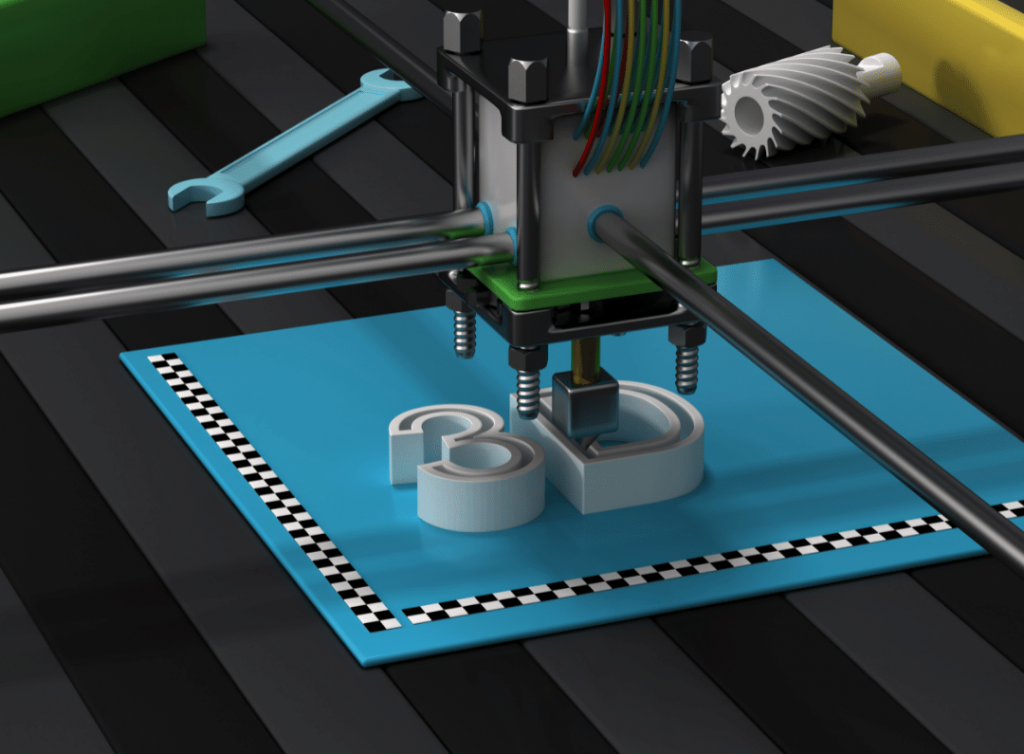Career Trends: September 19, 2022
Curated by the Knowledge Team of ICS Career GPS

Content Credit:
- Article by Al Kaatib, published on makeuseof.com. Original article link.
3D Printing uses digital files and additive materials to print solid, three-dimensional objects. The art of creating these digital files, sourcing suitable materials, and manufacturing functional 3D objects requires expertise in design, manufacturing, 3D software, slicing software, and so on.
3D printing is revolutionising the manufacturing industry, reducing wastage, and helping designers and artists visualise and execute their ideas in new and unique ways.
You need to have proficiency in computer-aided design(CAD) software, additive manufacturing and graphic design.
However, if you have a keen eye for design, the right educational background, and the will to learn, exploring career options in 3D printing would be the way to go. Begin by understanding what is 3D printing and how it works.
Here are some career options you can explore in 3D printing:
1. 3D Printing Design Engineer
- Experience in CAD software, graphics design, and a background in mechanical engineering can help you bag this role.
- Even if you don’t have these qualifications, a CAD-certified professional with a good hand in graphics and 3D modeling experience can also apply to this role.
- It entails evaluating 3D design requests, creating 3D model designs per client specifications, working with suppliers to source the appropriate design materials, scheduling and tracking 3D printing projects, and administering the CAD software.
- Design engineers must also oversee minor technical and administrative tasks until a 3D model is printed and delivered.
2. CAD Modeling
- Computer-aided design helps manufacturers create a prototype of a 3D object before printing it. CAD software is an essential tool in both traditional manufacturing and 3D printing.
- It’s most widely used in the automotive industry.
- Various CAD software like AutoCAD, Onshape, LibreCad, TurboCad, etc., are used to create digital files for custom 3D models with the exact shape, size, dimensions, and texture of the structure with detailed instructions about materials, substrate, and the printing procedure.
- Experience in CAD makes a career switch to 3D printing pretty easy.
3. 3D Printing in Construction
- 3D printing in construction is quickly gaining ground owing to low-cost and low-wastage manufacturing techniques.
- Whether it’s a 3D-printed bridge, a 3D-printed house, or a 3D-printed office building, it’s the future of construction 2.0 and uses the latest advancements in 3D printing technology.
- If you have a background in mechanical engineering, construction engineering, and experience with building materials manufacture and design, you can apply to 3D printing roles in the construction industry and work for companies like Wasp, Alquist, Cobod, Icon, Apis Cor, etc.
4. 3D Printing in Architecture
- 3D printing in architecture uses software like Graphisoft Archicad, Cedreo, Chief Architect, etc., and the best 3D printers to design, draft, and model building structures.
- Architects can visualise their designs, effectively communicate their ideas to the construction teams, and experiment with various materials for layered 3D printing.
- 3D Architectural Design Drafter, 3D Architectural Visualiser, 3D Architectural Artist, 3D Design Rendering, Virtual 3D Architecture, and so on are a few profiles you can explore.
5. 3D Printing in Medicine and Pharmacy
- Additive manufacturing is quickly gaining ground in medical and dental sciences owing to advancements in printing biofunctional anatomical structures.
- 3D printing is also being deployed in clinical research to develop better surgical devices, drug delivery systems, and prosthetics.
- Polypills—3D printed pills with multiple medicines also open this field to pharmaceutical professionals.
- Education in the life sciences, medicine, dentistry, or pharmacology and experience in the manufacturing field are the prerequisites to explore these career options.
- 3D Printing Technologist, 3D Printing Healthcare Specialist, Biomedical Engineer, 3D Lab Technician, etc. are standard profiles you can apply to.
6. 3D Printing in the Legal Profession
- Although this profession is still in its nascent stages, it incudes drafting 3D printing laws, rulings on intellectual property rights for 3D designs and manufacturing processes and techniques, working on copyright laws for industrial manufacturing in 3D printing.
- Also licensing 3D software tools and designs.
- All this requires legal expertise and have dedicated people working on these issues.
- Legal education and experience with copyright laws are necessary if you want to explore careers as a legal counselor, adviser, or litigator in the 3D printing sector.
…
Have you checked out yesterday’s blog yet?
Trends and Predictions for Job Seekers in 2022
(Disclaimer: The opinions expressed in the article mentioned above are those of the author(s). They do not purport to reflect the opinions or views of ICS Career GPS or its staff.)
Like this post? For more such helpful articles, click on the button below and subscribe FREE to our blog.




2 Replies to “Interesting Career Options in 3D Printing”